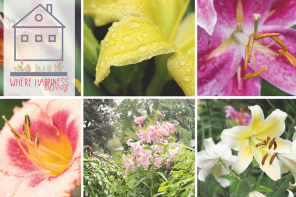By Katie Vaughn
Can a person’s home impact their ability to relax? Absolutely, says Larissa Anderson, owner of Haven Design Studio. Read on for her best tips.
“There have been a number of studies that look at clutter and a person’s environment and how, scientifically, they affect not only your mental health, but also your physical health,” says Anderson. “For example, if you live in a cluttered environment, your brain is under cognitive stress, as it constantly tries to figure out which item to focus on. It’s like a program running in the background of your computer — it takes up mental and emotional band- width, even if you’re not conscious it’s happening.”
So, how can we create more soothing spaces? Anderson shares some universal elements that encourage relaxation.
CHOOSE COLOR
Neutral and natural palettes make a space feel visually relaxing. Green has had a big trending moment for the last few years, and there’s a reason why! It reminds our brains of nature, which helps regulate our nervous system and visually brings the outdoors in. Anderson loves Evergreen Fog by Sherwin-Williams, or Eider White as a neutral.
EMPLOY ORGANIC ELEMENTS
Speaking of nature, organic touches can make a space feel relaxing. Look for wood furnishings, jute rugs and chairs with caning. And of course, pick up plants. They soften any space with their organic shapes, but also help purify the air naturally. Total win!
USE CLOSED STORAGE
Back to decluttering — one of the best ways to combat the visual busyness of clutter is to have a place for everything. Instead of open shelving, use closed storage for a soothing aesthetic. When items have a place where they consistently “live” (and it’s out of sight), it removes the mental work of figuring out where to put them.
LOOK AT LIGHTING
This is a big design element that affects both the feel of a room and the way you can enjoy it. Overhead lighting is the most common mood killer for a room! Using a variety of smaller, lower light sources instantly creates ambiance and makes a space feel cozier.
The other big lighting consideration is using the correct type of illumination for the task at hand. If you’re in the kitchen prepping a meal, or in a workshop creating some- thing, you need brighter, whiter light to see what you’re doing accurately. If you’re in the primary bathroom putting on makeup, that requires a very different kind of light. Sipping a drink with friends in your living room requires a third type of light. LED lights come in Kelvins, which is the measure of light warmth. Anderson’s rule of thumb for lighting spaces is:
- Task lighting (for kitchen recessed lighting, closets, pantries, workshops, offices): 3500K — this is a brighter, whiter light perfect for doing work.
- Everyday neutral lighting (for halls, under-cabinet lighting, mudrooms, bathroom recessed lighting): 3000K — this is similar to daylight, not too harsh or blue, but still bright and moderately warm.
- Ambient lighting (for living rooms, island pendant lights, dining pendant lights, bedroom lighting, media rooms, game rooms): 2700K — this is your warm, incandescent-like lighting, providing a cozy, intimate feel.
- Create zones. This is another way to create relaxing, cozy environments. If you use a spot specifically for work, it can be hard to also use that space to unwind. If you have the ability to create separate spaces that are dedicated to relaxation, it can go a long way. For example, even just filling a corner with a reading chair, side table and bookshelf can provide a subconscious cue to relax when you’re in the area. Your brain knows that when you’re at your desk, in brighter light, it’s time to focus and work. When you move to a cozy chair, with a soft blanket and warmer light, it’s time to stop working and rest.
TRY TEXTURES
Textural elements are also huge, be it a plush rug underfoot, linen sheets or even a super cozy sweater that you consistently use during your downtime.
SELECT SCENTS
Fragrance can provide powerful cues for your brain. Anderson loves to use diffusers in kitchens, bathrooms and bedrooms. Lavender helps with relaxation, but Anderson’s favorites are actually sandalwood, neroli, sage and ylang-ylang.
On top of these tips, Anderson suggests filling your chill-out zones with your favorite games, movies, music and other elements that signify downtime to you.
“Then make a point of regularly enjoying them with family and friends,” she says. “The world can be a stressful place, but if you take the time to create a haven, it can truly impact your wellbeing for the better.”



